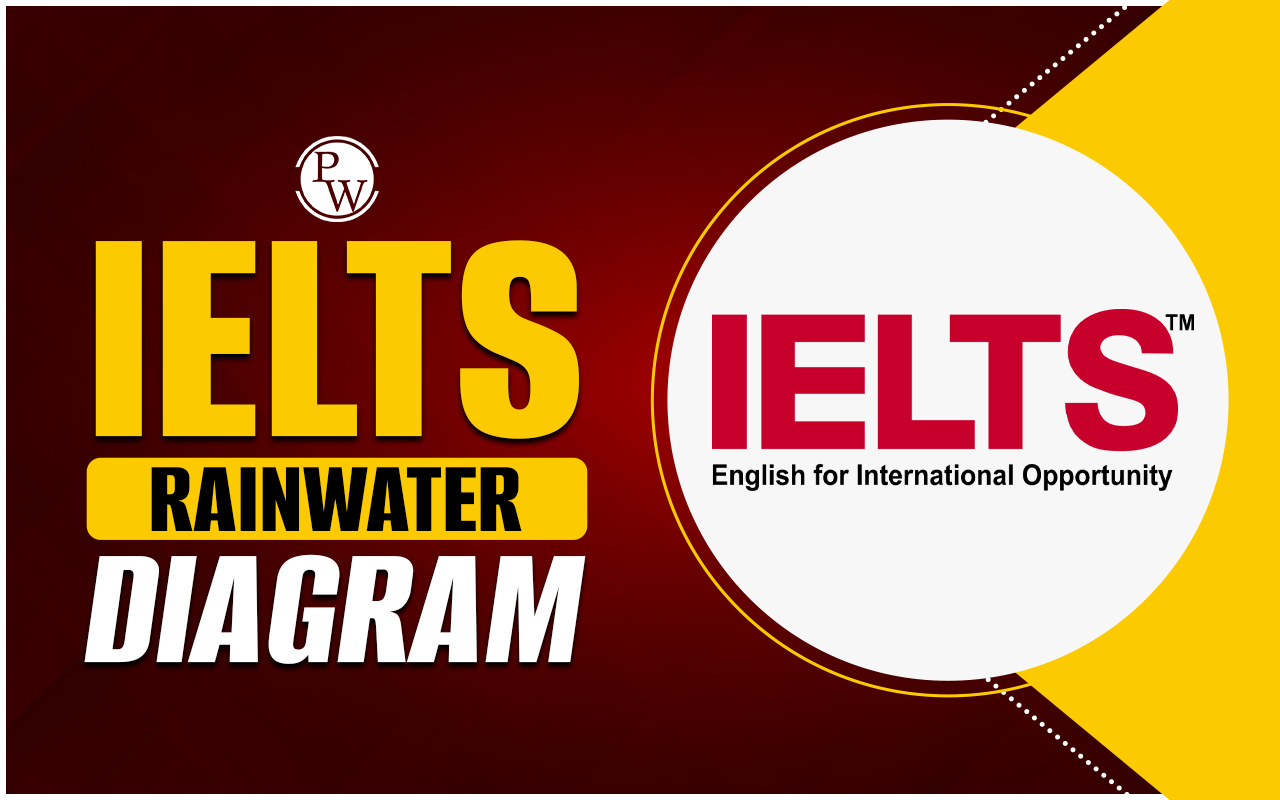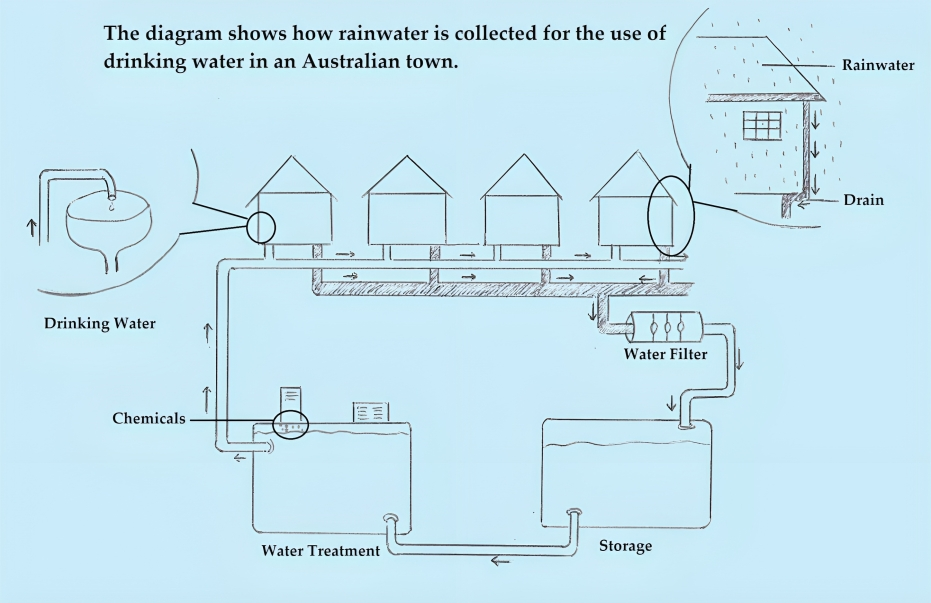

IELTS Rainwater Diagram: In IELTS Writing Task 1, you might be given a process diagram to explain, and one of the frequently used examples is the water cycle, also known as the rainwater cycle. This kind of diagram illustrates how rainwater travels through various phases in the natural environment. To get a good score, it's essential to describe each stage in a logical order and use suitable vocabulary that matches the process.
Also Check:
- How to Write an Line Graph for IELTS Writing Task 1
- IELTS Sample Charts for Writing Task 1
- IELTS Sample Letter for Writing Task 1
Understanding the IELTS Rainwater Diagram
The rainwater cycle diagram illustrates how water continuously moves through different stages in the environment. It is a natural and recurring process that includes evaporation, condensation, precipitation, and collection. Each step shows how water changes form and circulates between the Earth and the atmosphere.
Step-by-Step Breakdown of the Rainwater Cycle
Here is a detailed explanation of each stage in the rainwater cycle:
1. Evaporation
-
Water from oceans, rivers, and lakes gets heated by the sun.
-
As the temperature rises, water turns into vapour and rises into the air.
-
This process is known as evaporation.
2. Condensation
-
When the water vapour reaches higher altitudes, it cools down.
-
The cooling process causes vapour to change into tiny water droplets.
-
These droplets group together to form clouds. This stage is called condensation.
3. Precipitation
-
As more droplets gather, clouds become heavy and saturated.
-
Eventually, water falls back to the earth in the form of precipitation.
-
This includes rain, snow, or hail, depending on weather conditions.
4. Collection
-
The water from precipitation gets collected in various places:
-
Natural water bodies like rivers, lakes, and oceans
-
Artificial reservoirs or underground sources
-
Some water also seeps into the soil, contributing to groundwater.
-
From here, the cycle begins again through evaporation.
IELTS Writing Task 1 Sample Answer
Question: The diagram below shows the process of collecting, filtering, and distributing rainwater. Summarize the information by selecting and reporting the main features, and make comparisons where relevant.

Answer:
The diagram shows how rainwater is collected, cleaned, and then supplied to households for daily use.
To begin with, rainwater is gathered from the rooftops of buildings. It flows through gutters and downspouts into a main collection point. This initial step helps collect as much rainwater as possible. Once collected, the water passes through a filtration system, which removes dirt, leaves, and other unwanted particles that might pollute it.
After the basic filtration, the water is stored in large underground tanks. These tanks serve as a reservoir, especially useful during times when there is little or no rain. From here, the water goes through an advanced purification stage. This includes chemical treatment and further filtering to make sure the water is safe to drink.
The final step involves sending the treated water through a network of pipes to houses. This distribution system ensures that the clean water reaches people for their everyday needs.
Overall, the diagram outlines a practical and efficient method of turning rainwater into a safe and reliable water source. Every stage—from capturing and cleaning the rainwater to storing and delivering it—helps maintain the quality and accessibility of water for household use.
Also Check:
- IELTS Writing Task 1 Table Chart
- IELTS Pie Chart Task 1
- How to Describe Pie Charts in IELTS Writing Task 1
Vocabulary for Describing Diagrams
Here are some useful words and phrases for describing the rainwater cycle in IELTS Writing Task 1:
|
Word/Phrase |
Meaning |
|---|---|
|
Evaporation |
Process of water turning into vapour |
|
Condensation |
Vapour turning into droplets/clouds |
|
Precipitation |
Rain, snow, or hail falling from clouds |
|
Collection |
Gathering of water after precipitation |
|
Saturated |
Filled completely with moisture |
|
Infiltration |
Water seeping into the soil |
|
Repeating cycle |
A process that continues over and over |
Structure Tips for Process Diagrams
When writing about a process like the rainwater cycle, follow this structure:
-
Introduction – Paraphrase the task.
-
Overview – Summarise the entire cycle.
-
Main Body Paragraphs – Describe each stage in sequence.
-
Linking words – Use time connectors like first, next, then, finally.
IELTS Rainwater Diagram FAQs
How do I describe a process diagram in IELTS Writing Task 1?
Should I include all stages of the rainwater cycle?
What tense should I use in a process diagram?
How can I improve my vocabulary for process diagrams?
Is it necessary to mention the sun in the rainwater cycle?












